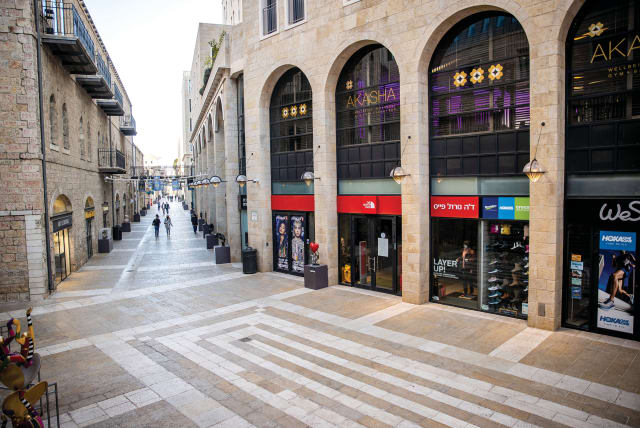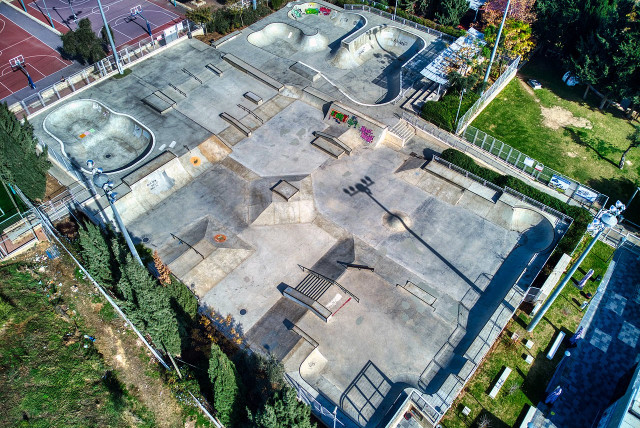Where are Jerusalem's Jews, Arabs living together?

Two case studies involving areas in Jerusalem where Jews and Palestinians work and play alongside each other are the Mamilla Mall and Liberty Bell Park.
Two recent surveys published by the Jerusalem Institute for Policy Research (JIPR) show some intriguing changes and trends in the behavior among the city’s various sectors, as well as shifts in residential areas.
While the surveys, based on data from the Central Bureau of Statistics, find that the number of Palestinians who choose to live in Jewish neighborhoods (mainly for improving housing conditions) is increasing and currently stands a 12,000 people (at least), the number of Jews who moved – mainly for ideological reasons – to live in crowded Muslim population areas is about 4,000 to 5,000.
For years, neighborhoods in Jerusalem were divided separately between Jews and Arabs; but sources in local political circles estimate that this new reality might encourage more Palestinians to take part in the upcoming municipal elections.
“They move to Jewish neighborhoods to find better conditions, but living surrounded by Jews may also have some impact on their attitude toward these elections,” says a source, who adds, “being away from the Palestinians activist groups – Hamas or Fatah – can help these residents to feel less concerned about their “Israelization” process.
Are Jerusalem's public spaces successful?
But more is revealed in the most recent survey conducted by Marik Stern and Nitzan Faibish for the JIPR earlier this week. Following a significant expansion in research on designing urban public spaces, Stern and Faibish proposed a model for Shared Spaces in Contested Cities – A Model for Analysis and Development applying to the situation in Jerusalem.
The survey proposes five key elements for determining whether a public space is “successful”:
- Inclusiveness – Free accessibility to all
- Meaningfulness – Infrastructure enabling meaningful community activities
- Safety – Do people feel safe there? What safety measures are in place? Is the physical infrastructure sound?
- Comfort – The environment must enhance residents’ physical and emotional well-being
- Pleasure-ability – Do residents and visitors find the area pleasant and agreeable?
Two case studies involving areas in Jerusalem where Jews and Palestinians work and play alongside each other are the Mamilla Mall on the east-west Jerusalem seamline, and Liberty Bell Park, a park in west Jerusalem.
The Mamilla Mall is located between central Jerusalem and the Old City, and unlike other malls in the city, there are no security checks at the entrances.
Liberty Bell Park was built in 1976 to mark the US bicentennial in an area called Umriyah. It includes leisure and sports facilities, a skate park, a children’s playground, and a repertory puppet theater. The skate park is known as a meeting place for both Jewish and Palestinian youth.
The complex is located not far from the Arab Abu-Tor neighborhood and is described by researchers as “passive engagement,” in terms of its population. The area comprises a Jewish-Israeli space under the auspices of the City Parks Community Administration. The municipality initiates on site activities, although there is no active community as such, with little interaction between Arab and Jewish families, unlike in the skate park where Arab and Jewish youths mingle.
These two findings indicate that in reality, changes in habits occur more quickly than one might expect. Among the approximately 370,000 residents of east Jerusalem, not all of them change and develop at the same rate. Their personal needs can sometimes dictate new patterns of behavior, not seen before. These include the desire to learn and integrate into the labor market, and to enjoy the relatively easy status as holders of a blue Israeli identity card (teudat zehut). ❖
Jerusalem Post Store
`; document.getElementById("linkPremium").innerHTML = cont; var divWithLink = document.getElementById("premium-link"); if (divWithLink !== null && divWithLink !== 'undefined') { divWithLink.style.border = "solid 1px #cb0f3e"; divWithLink.style.textAlign = "center"; divWithLink.style.marginBottom = "15px"; divWithLink.style.marginTop = "15px"; divWithLink.style.width = "100%"; divWithLink.style.backgroundColor = "#122952"; divWithLink.style.color = "#ffffff"; divWithLink.style.lineHeight = "1.5"; } } (function (v, i) { });

